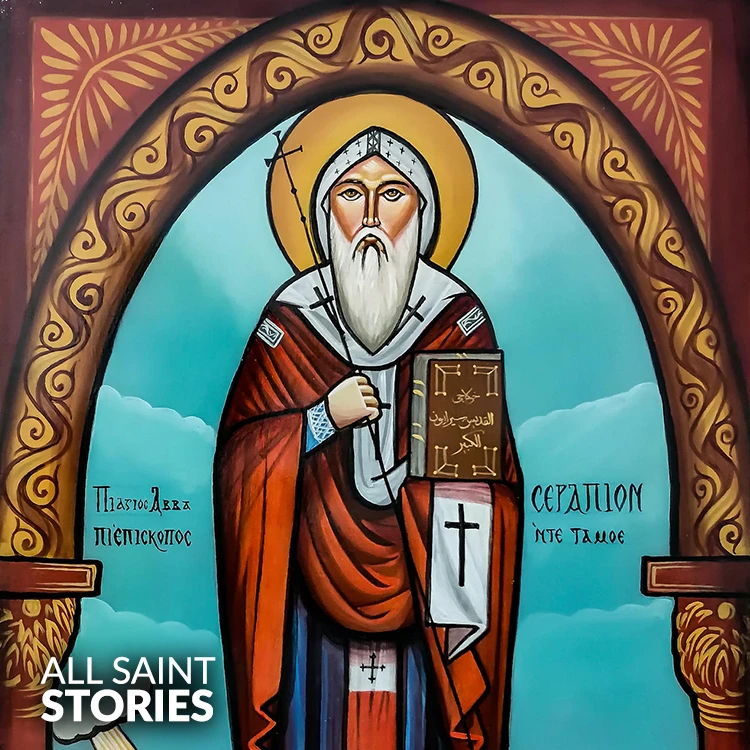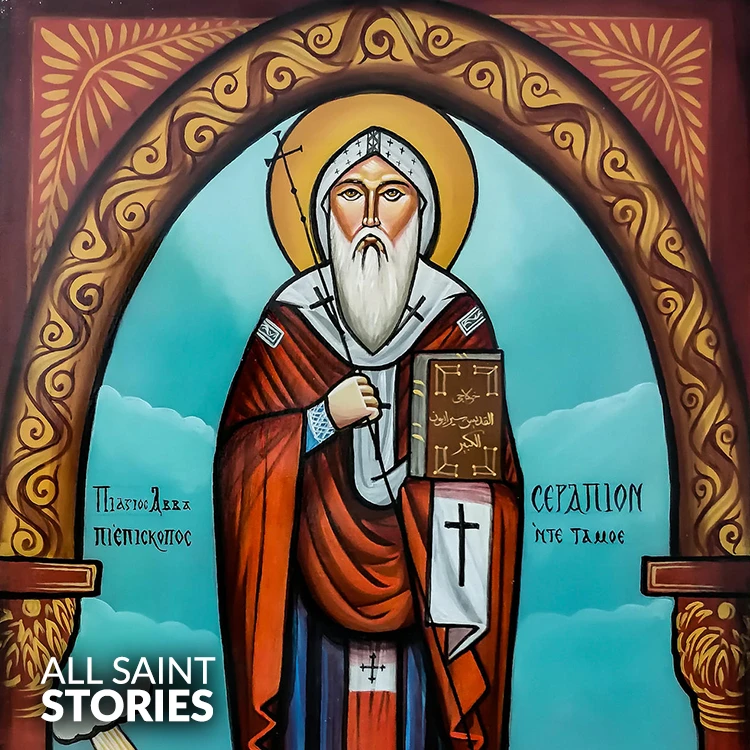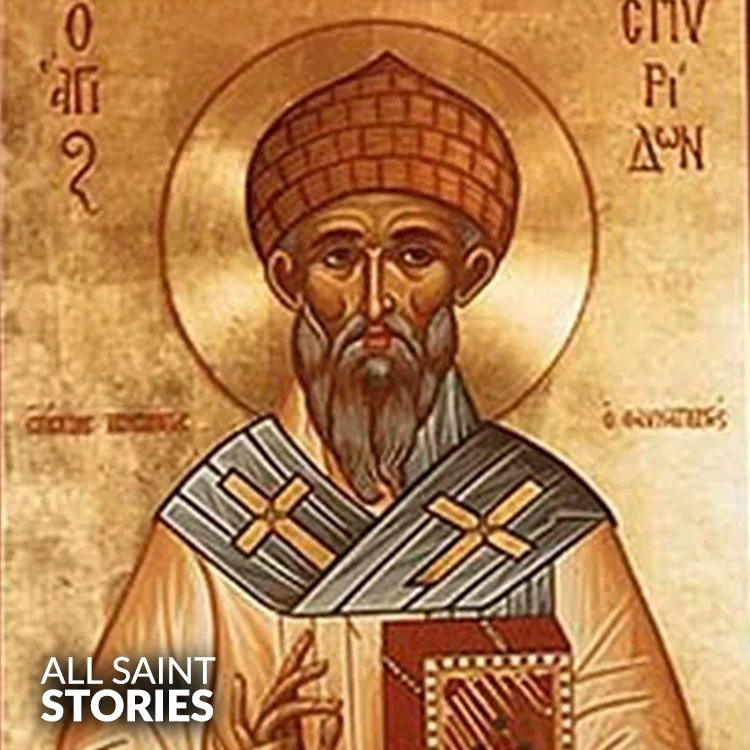Saint Serapion, faithful servant of God, Through your dedication and love, you showed us the path of true discipleship. Intercede for us before the Lord, that we may have strength in our trials, Courage in our struggles, and steadfast faith in all things. Guide us on our journey toward holiness, And help us to live with humility and grace, as you did. In the name of Jesus Christ, Amen.
ST. SERAPION OF EGYPT
ST. SERAPION OF EGYPT

St. Serapion of Egypt, also known as Serapion the Sindonite, was a 4th-century Christian hermit who devoted his life to asceticism and prayer. Renouncing wealth, he embraced a life of poverty, living in solitude in the desert. Known for his extreme humility, he wore a coarse garment to symbolize his rejection of worldly comforts. He is revered for his contribution to the early monastic movement in Egypt and serves as an inspiration for those seeking a deeper spiritual life of devotion.
St. Serapion of Egypt, often called Serapion the Sindonite, was an influential figure in the early Christian monastic movement. He lived during the 4th century, a time when monasticism was beginning to flourish in Egypt, particularly in the Egyptian desert. St. Serapion was born into a wealthy family but chose to forsake his riches and live a life of poverty and asceticism. His decision to leave behind his material wealth and dedicate himself to a life of prayer and solitude reflected the deep spiritual transformation that was taking place within the early Christian community.
One of the defining features of St. Serapion's life was his extreme asceticism. He is said to have worn a rough garment made of coarse material known as "sindon," which became the source of his title, "the Sindonite." This garment was symbolic of his rejection of worldly comforts and his commitment to a life of humility. St. Serapion lived as a hermit, spending his days in prayer, fasting, and contemplation, detached from the distractions and temptations of the world. His lifestyle became a model for other early Christian monastics, particularly in Egypt, which was becoming a hub for hermits and ascetics.
Although little is known about the specific details of his life, St. Serapion's influence on early Christian monasticism is well-documented. He is thought to have been one of the many ascetics who contributed to the growing tradition of Christian monasticism in Egypt. The Egyptian desert became home to many hermits and monastic communities, where individuals like St. Serapion lived in solitude, seeking a deeper connection with God through prayer and ascetic practices. These early monastics laid the foundation for the monastic communities that would spread across the Christian world in the centuries that followed.
St. Serapion is remembered for his devotion to God and his commitment to the ascetic ideal. His life was a testament to the Christian belief in the importance of detachment from material things in order to draw closer to God. His example of living a life of prayer and humility continues to inspire individuals seeking a deeper spiritual life, and he is honored as a saint in both the Eastern Orthodox Church and the Catholic Church. His feast day is celebrated on March 21 , a day that commemorates his life of asceticism, prayer, and dedication to the Christian faith.
In summary, St. Serapion of Egypt remains an important figure in the history of Christian monasticism. His commitment to a life of solitude, prayer, and poverty serves as a powerful example of how one can dedicate oneself fully to God. His legacy continues to inspire Christians who seek to live a life of deeper faith and devotion, free from the distractions of the material world.
Video Not Found
The information on this website is compiled from various trusted sources. While we aim for accuracy, some details may be incomplete or contain discrepancies.
If you notice any errors or have additional information about this saint, please use the form on the left to share your suggestions. Your input helps us improve and maintain reliable content for everyone.
All submissions are reviewed carefully, and your personal details will remain confidential. Thank you for contributing to the accuracy and value of this resource.
Credits & Acknowledgments
- Anudina Visudhar (Malayalam) – Life of Saints for Everyday
by Msgr. Thomas Moothedan, M.A., D.D. - Saint Companions for Each Day
by A. J. M. Mausolfe & J. K. Mausolfe - US Catholic (Faith in Real Life) – Informational articles
- Wikipedia – General reference content and images
- Anastpaul.com – Saint images and reflections
- Pravachaka Sabdam (Malayalam) – Saint-related content and insights
We sincerely thank these authors and platforms for their valuable contributions. If we have unintentionally missed any attribution, please notify us, and we will make the correction promptly.
If you have any suggestion about ST. SERAPION OF EGYPT
Your suggestion will help improve the information about this saint. Your details will not be disclosed anywhere.
© 2025 Copyright @ www.allsaintstories.com



 English
English
 Italian
Italian
 French
French
 Spanish
Spanish
 Malayalam
Malayalam
 Russian
Russian
 Korean
Korean
 Sinhala
Sinhala
 Japanese
Japanese
 Arabic
Arabic
 Portuguese
Portuguese
 Bantu
Bantu
 Greek
Greek
 German
German
 Dutch
Dutch
 Filipino
Filipino